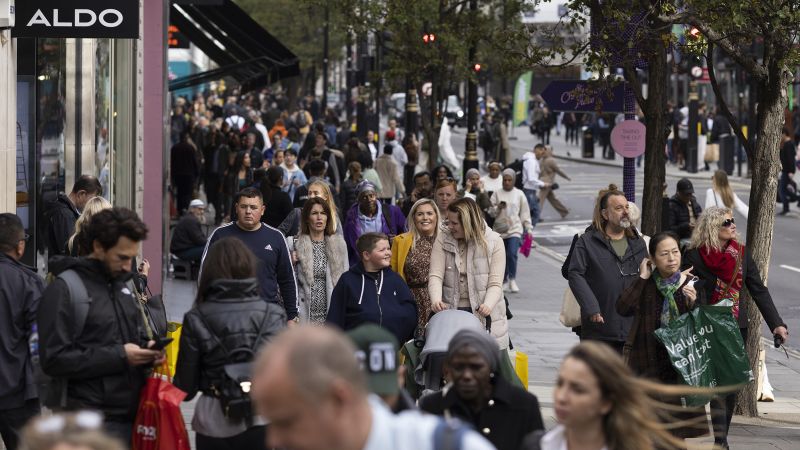Why Has the Growth of Employment stayed Strong During the Post-Pendemic Era? An Economic Perspective from Gad Levanon
The Burning Glass Institute has a chief economist, Gad Levanon. He was the head of The Conference Board’s Labor Market Institute. The opinions expressed in this commentary are his own.
Why has the growth of employment stayed strong? First, the US economy is holding on better than many expected. The Atlanta Fed’s GDPNow estimate for real GDP growth in the third quarter of 2022 is 2.3%, suggesting that while the economy is now growing much more slowly than it did last year, we are still not in a recession. When the demand for goods and services strengthens, so does the demand for workers producing these goods and services.
This tight labor market – and the rapid wage growth it has spurred – is causing inflation to become more entrenched. The Consumer Price Index, which measures a basket of goods and services, was 8.3% year-over-year in August. That’s lower than the 40-year high of 9.1% in June, but still painfully high. To address it, the Federal Reserve is likely to drive the economy into a recession in 2023, crushing continued job growth.
Second, despite the slowing of the economy and the growing fears of recession, layoffs are still historically low. Initial claims for unemployment insurance were higher in the week ended October 1st, but still one of the lowest readings in recent decades. Employers are reluctant to reduce the number of workers even though their businesses are slowing after years of increasingly traumatic labor shortages. Companies fear that they will have trouble recruiting new workers once they start expanding again.
Fifth, during the pandemic, corporate investments in software and R&D reached unprecedented levels, which drove a rapid increase in new STEM jobs. Because these workers are especially well paid, they have had plenty of disposable income to spend on goods and services, which has supported job growth throughout the economy.
Next year, however, will look very different. Many of the industries that are still recovering from the pandemic will have reached pre-pandemic employment levels. Demand is so low that some industries may go back to slower hiring. But this alone is unlikely to push job growth into negative territory. monetary policy is what will do that.
Reducing demand for workers is one way to rein in the labor market. But it’s hard to engineer a boost in labor supply. It takes a lot of legislative actions to increase immigration, drive people into the labor force or invest in workforce training. This is likely to prove elusive in today’s polarized political environment.
The United Kingdom is now 3rd-straight GDP contraction in the last four years after the Coronavirus Pandemic: Results from the ONS
The United Kingdom is the only G7 economy to have contracted in the third quarter and is now 0.4% smaller than it was at the end of 2019, before the coronavirus pandemic began, according to the ONS.
“The quarterly fall was driven by manufacturing, which saw widespread declines across most industries. Services were flat overall, but consumer-facing industries fared badly, with a notable fall in retail,” ONS director of economic statistics Darren Morgan said in a statement.
The extra bank holiday for Queen Elizabeth II’s funeral on September 19 also played a role, as some businesses closed or adjusted their operations that day, the ONS said. The GDP fell in September.
James Smith, the developed markets economist at ING, said in a note on Friday that lower consumer spending is likely to push GDP into a second-straight contraction during the fourth quarter.
The Bank of England said last week that the UK may be in a recession for a long time. And the third quarter contraction contrasts with expansion of 0.2% in France and Germany, and growth of 0.5% in Italy.
The European Commission warned Friday that high inflation and rising interest rates are likely to tip the euro zone into recession in the fourth quarter. It now expects inflation to peak at the end of the year at a rate of 8.5%.
The contraction of economic activity is set to happen in the first quarter of 2023 as inflation keeps cutting into households’ disposable incomes.
That would be the longest since World War II and eclipse the downturn that followed the 2008 global financial crisis, though the central bank said that any declines in GDP heading into 2024 would likely be relatively small.
Friday’s GDP figures “solidify the picture that the economy is moving towards recession, if not already in one,” David Bharier, head of research at the British Chambers of Commerce said in a statement.
Weak economic growth and a decline in bond marketConfidence in the UK government has been thrown into turmoil by weak economic growth and a decline in bond marketConfidence in the Uk government has been thrown into turmoil by weak economic growth and a decline in bond market
Jeremy Hunt reversed a lot of his plan in his first few days as finance minister, and is expected to announce tax rises and spending cuts next week to try to reduce debt.
Responding to the latest GDP figures, Hunt said: “I am under no illusion that there is a tough road ahead — one which will require extremely difficult decisions to restore confidence and economic stability. We need to control inflation, balance the books and reduce debt if we are to achieve long-term sustainable growth. There is no other way.”
